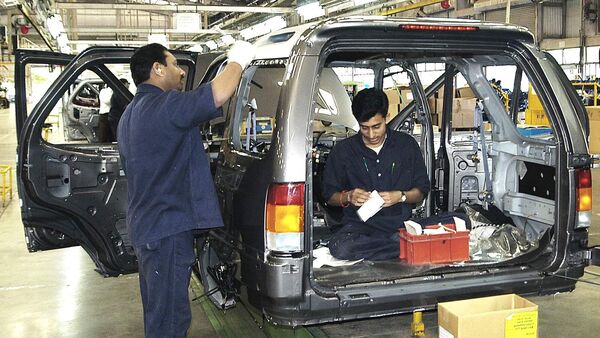Passenger vehicle sales in India grew 27% to 38.9 lakh units in 2022-23. This is certainly an impressive performance for the sector, but it is accompanied by a curious phenomenon. The growth is driven by the higher-end sports utility vehicle (SUV) segment, while sales of entry-level cars have plummeted. At 2,52,000, they account for just 6.5% of total PV sales, having registered a 57% drop from their peak in 2016-17. What could this signify?
The most powerful explanation for a decline in entry-level vehicles is that people are no longer moving up the income scale to a level where they can aspire to own a car. There are, however, a few factors that could qualify such an explanation.
One is from the supply side – from the manufacturers. Given a relative shortage of chips required to manufacture cars, manufacturers could have prioritised output of higher-margin SUVs over entry-level cars and thus cut back on the supply of entry-level cars. This would naturally have resulted in slower sales of entry-level cars.
Another is a change in the financing options for automobiles. In March 2022 inflation began to bite and central banks around the world began to raise policy rates of interest. Banks in India were flush with funds and had few corporate takers for loans, at least in the early part of the financial year. They were hunting for retail customers and pushing all kinds of loans to customers with a credible risk profile.
Access to easy financing could have persuaded many first-time car buyers to borrow a little extra and choose an entry-level SUV over an entry-level hatchback. It was in 2020-21 that car manufacturers had begun to launch and aggressively market compact SUVs as entry-level vehicles that are superior to hatchbacks.
But there was a factor that should have pushed up the sales of entry-level vehicles. Uber and Ola, which have been expanding their footprint, have stabilised their operations and attract drivers in large numbers. Uber, for example, buys entry-level cars and leases them to drivers who cannot buy their own vehicles. Even with this, entry-level vehicle sales have dipped. So we are back to the most obvious explanation – dysfunction of India’s prosperity engine.
The pandemic delivered a terrible blow to the informal sector. The flight of migrant labour from towns back to their villages deprived the small-scale sector of workers. The bulk of Indian cargo moves by trucks that are driven and cleaned by migrant workers. Their absence crippled the logistics infrastructure for long periods. Small garment exporters who managed to secure orders and find workers after a hiatus came up against a transport bottleneck.
While the government and the RBI announced schemes to support micro, small and medium Enterprises (MSMEs) with bank finance and pushed liquidity into banks, it did not quite reach the target enterprises. Only about 15-20% of MSME financing is met from formal sources. And official schemes did not augment finance for the suppliers of informal credit to the MSME.
Global inflation and synchronised policy-rate increases by the world’s central banks hampered economic activity everywhere. As rising rates and reversal of quantitative easing sucked liquidity out of the system, stock markets corrected, further shaking the confidence of economic agents. Layoffs made it to the headlines day after day, further shaking business confidence. Only those with stable jobs could afford to take loans and buy vehicles. This excluded most of the informal sector and parts of the formal sector as well.
The saving grace is that the worst is behind us. With the economy now definitely on the mend in India and China, and the US economy still in rude good health even after the Fed’s rate hike spree that saw interest rates rise by 5 percentage points, confidence is likely to remain.
The government’s budgeted increase in capital spending of ₹13.7 lakh crore – counting the grants made specifically for capital spending in the states – and the private investment this is expected to draw, should push up demand and restore economic momentum. Migrants have begun their return to cities, going by the decline in demand for work under the Mahatma Gandhi National Rural Employment Guarantee Act since December 2022.
This should bring vigour back to the informal sector and reactivate the Indian economy’s prosperity machine. Next April, we should be seeing more robust figures for entry-level passenger vehicles.
Download The Mint News App to get Daily Market Updates.
More
Less
#SUV #lowend #cars #continue #slide



